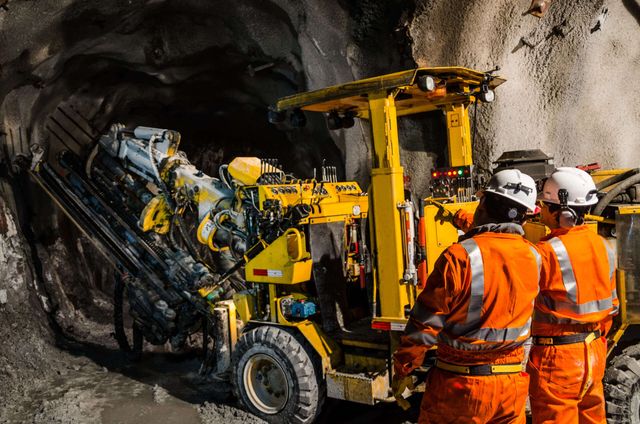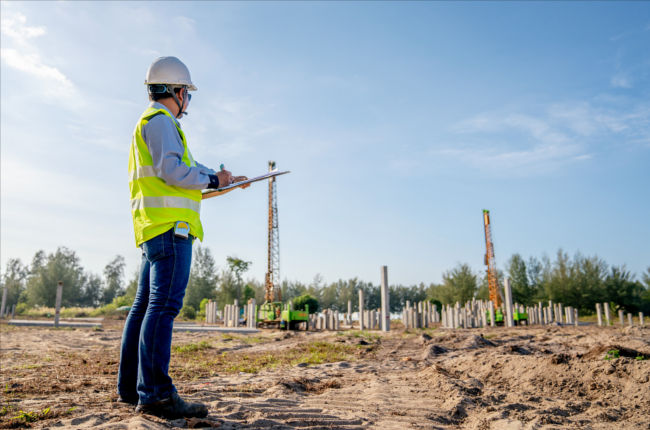Browsing the Complexities of Geotechnical Eng Projects
Browsing the Complexities of Geotechnical Eng Projects
Blog Article
The Crucial Payments of Geotechnical Designers in Evaluating Soil Actions and Foundation Design for Sustainable Framework Development
Geotechnical designers work as a cornerstone in the world of sustainable framework advancement, where their knowledge in evaluating soil habits directly affects the security and longevity of frameworks. By employing sophisticated methods such as Standard Penetration Tests and Cone Infiltration Testing, they thoroughly examine dirt homes, leading to notified decisions on foundation layout. These evaluations not just minimize threats related to differential settlement yet additionally pave the means for ingenious, environmentally mindful methods. As we discover the important duty they play, the ramifications of their payments raise essential inquiries regarding the future of facilities strength and sustainability.
Role of Geotechnical Engineers

In addition to site examinations, geotechnical designers assess potential risks such as dirt liquefaction, incline security, and groundwater problems. They use advanced engineering concepts to develop services that mitigate these threats, making certain that styles follow appropriate codes and criteria. Their job frequently includes partnership with various other design self-controls, engineers, and environmental scientists to produce integrated approaches to infrastructure advancement.
Additionally, geotechnical designers contribute to lasting techniques by advertising the usage of materials and approaches that lessen ecological effect. Via their comprehensive understanding of dirt technicians and geology, they play an essential function in cultivating safe, resilient, and lasting infrastructure that meets the requirements of culture while safeguarding the environment.
Dirt Habits Assessment Strategies
Understanding dirt habits is essential to notified decision-making in geotechnical engineering, as it straight influences the style and construction processes. Numerous evaluation techniques are utilized to review soil buildings, making sure exact predictions of its performance under various loading conditions.
One key method is the Standard Penetration Examination (SPT), which gives understandings right into soil thickness and consistency via the resistance come across during penetration. Cone Penetration Screening (CPT) provides a continuous profile of dirt stratification and in-situ strength parameters, allowing a much more in-depth understanding of subsurface problems.
Laboratory examinations, such as Atterberg limitations, unconfined compressive strength, and triaxial tests, are vital for identifying soil actions under controlled conditions. These examinations facilitate the decision of essential specifications, consisting of shear leaks in the structure, toughness, and compressibility.

Foundation Design Concepts
Foundation design principles are critical for guaranteeing the security and longevity of frameworks, as they dictate just how tons are transferred from the superstructure to the underlying dirt. These concepts include different factors to consider, including load-bearing capability, negotiation, and side stability. A detailed understanding of soil auto mechanics is essential for geotechnical designers to assess the communication between the soil and the structure.
One trick principle is the appropriate choice of foundation type, which may include shallow foundations, such as spread footings, or deep foundations, like stacks or caissons, depending upon dirt conditions and structural tons - geo tech engineering. The foundation must be created to lessen differential settlement, which can result in structural damage

Sustainable Framework Practices
How can we effectively incorporate sustainability right into facilities practices? To accomplish this, it is important to adopt geotech engineer an alternative approach that stresses the partnership in between geotechnical engineering and ecological stewardship. Sustainable infrastructure techniques begin with extensive website assessments, which assess soil actions, regional communities, and source availability. By recognizing these variables, designers can create designs that decrease ecological effect while enhancing material usage.
Furthermore, utilizing cutting-edge construction methods, such as using recycled products and low-impact structures, substantially decreases the carbon footprint of facilities jobs. Geotechnical engineers play a critical role in choosing appropriate materials that enhance longevity and sustainability, such as utilizing geo-synthetics to boost dirt stability and reduce disintegration.
On top of that, sustainable framework practices require ongoing monitoring and upkeep to guarantee that frameworks remain durable gradually. This consists of carrying out adaptive management approaches to deal with prospective ecological modifications. Partnership among stakeholders-- including designers, neighborhood areas, and policymakers-- is crucial for integrating sustainability objectives right into task preparation and execution. Eventually, these methods not only add to the long life of frameworks yet also advertise a much healthier atmosphere, straightening facilities development with broader sustainability objectives.
Situation Research Studies and Applications
Study in geotechnical engineering give important insights into the useful applications of soil actions and lasting framework techniques. One notable instance is the construction of the Burj Khalifa in Dubai, where comprehensive soil testing and evaluation were carried out to review the special obstacles presented by the area's loosened sand and high water table. explanation Geotechnical designers employed advanced methods such as dynamic probing and cone infiltration screening to establish the dirt's load-bearing capability, inevitably leading to the style of a deep structure system that sustains this legendary structure.
Another crucial situation is the remediation of the San Francisco-Oakland Bay Bridge after the 1989 Loma Prieta earthquake. Geotechnical assessments disclosed the requirement for soil stabilization methods, consisting of grouting and dirt nailing, to improve the seismic strength of the structure. These treatments not just boosted the bridge's safety however also added to its longevity and sustainability.
Such situation researches exemplify exactly how geotechnical engineers play an essential role in understanding dirt behavior and applying innovative options to ensure the architectural honesty and sustainability of facilities jobs. civil consulting engineers. Their experience is essential in resolving the complicated tests posed by different soil conditions across varied geographic areas
Final Thought
Finally, the payments of geotechnical designers are important for the assessment of dirt habits and the design of structures, which are necessary for sustainable infrastructure advancement. Via the application of imp source sophisticated testing strategies and ingenious products, these professionals guarantee the security and security of frameworks while minimizing ecological influences. The integration of sustainable methods promotes strength in facilities projects, highlighting the value of partnership among stakeholders to accomplish efficient building and construction solutions that fulfill both environmental and social demands.
Geotechnical designers offer as a foundation in the realm of sustainable infrastructure development, where their knowledge in examining soil behavior directly affects the safety and long life of structures.Geotechnical engineers play an important role in the layout and building of infrastructure by examining soil and rock actions to ensure security and safety and security. A complete understanding of soil mechanics is essential for geotechnical designers to assess the interaction in between the structure and the dirt.
Geotechnical analyses exposed the demand for soil stabilization methods, consisting of grouting and soil nailing, to improve the seismic strength of the structure.In conclusion, the contributions of geotechnical designers are crucial for the evaluation of soil behavior and the design of structures, which are necessary for sustainable infrastructure growth.
Report this page